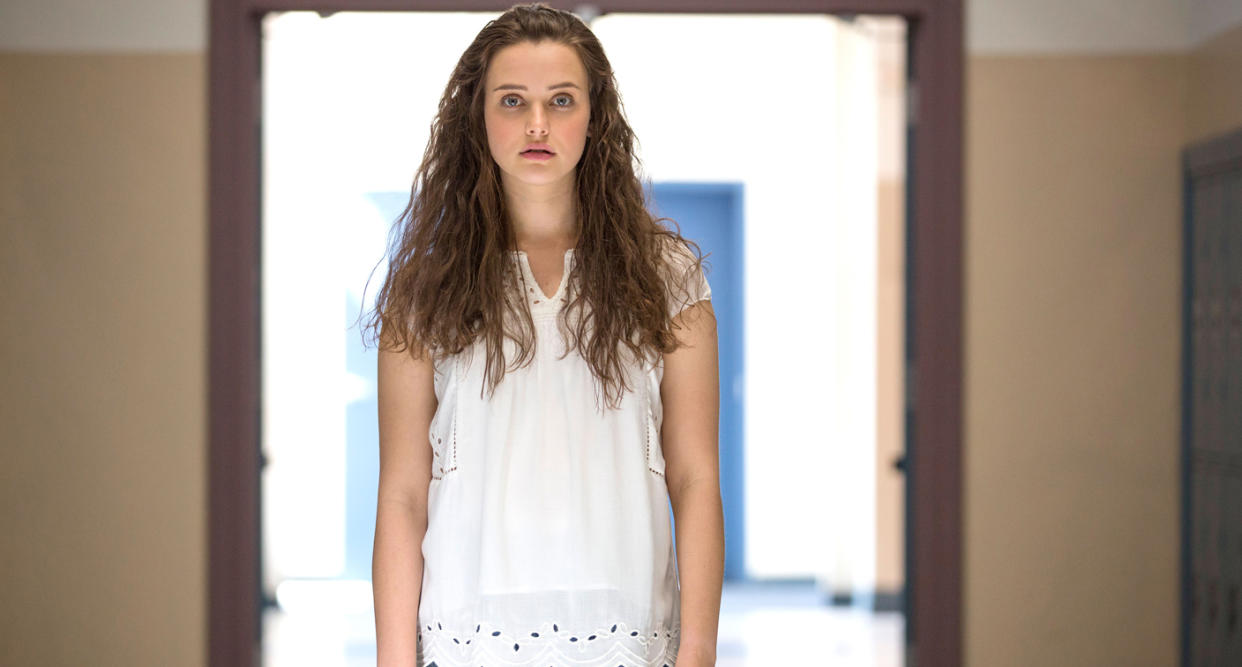Netflix deleting suicide scene from '13 Reasons Why' is 'really important,' says this expert

Mental health experts are praising Netflix’s decision to delete a teen suicide scene from the first season of 13 Reasons Why, as the unintended effects on vulnerable viewers could be tragic.
“The exposure to someone else’s suicide — either described in print or a visual fictional portrayal like in this case — can, for the minority of people currently at risk and already vulnerable, add more risk,” Christine Moutier, M.D., chief medical officer for the American Foundation for Suicide Prevention (AFSP), who worked with Netflix to get the scene deleted, tells Yahoo Lifestyle.
It’s not that seeing these depictions causes suicide contagion on its own, she explains, but that it could push someone toward a suicide they were already contemplating. And it’s why Netflix’s Tuesday announcement, that it was removing the scene in which Hannah Baker takes her own life from Season 1’s Episode 13, is impactful.
“I think it’s really important, because we only have today. And moving forward, as subsequent seasons launch…you’ll have a whole new generation who will go back and watch it from the beginning,” Moutier says. “That was primarily on my mind.”
Netflix made its announcement following discussions with the AFSP and other groups, noting on Twitter that as the network prepares to launch Season 3 later this summer, they’ve “been mindful about the ongoing debate around the show.”
An update on 13 Reasons Why
If you or someone you know needs help finding crisis resources please visit https://t.co/cNtjtuNG1p pic.twitter.com/SxGjbYpZF6— Netflix US (@netflix) July 16, 2019
According to a recent study by the Annenberg Inclusion Initiative and AFSP, “...fewer than 2% of all film characters and roughly 7% of TV characters experience mental health conditions on screen. In contrast, close to 20% of the U.S. population experiences some form of mental health condition or illness per year.”
AFSP noted in a statement, “We found the portrayal of mental health overall is sparse (1.7% of speaking roles appearing in film and 7.1% on television versus 20% of the American public who we know have a mental health condition) and extremely distorted, showing a grave and nearly complete misunderstanding of the issue.”
It continued, “This gross misrepresentation includes frequent derogatory name calling, inaccurate linkage to violent behavior, and an overall lack of understanding about the experiences of people with mental health conditions. We know most people with mental health conditions live full lives, but this is not shown in most television programs or in movies.”
“By contrast,” the statement continues, “there are many characters in 13 Reasons Why with complex mental health struggles, who are portrayed through their experiences and relationships in ways that do show how people with mental health struggles and/or traumatic experiences are impacted – that they are real human beings with full lives like all people. The show has encouraged young people to start conversations about previously stigmatized mental health issues and to get help.”
Still, Moutier notes, research has repeatedly shown that humans are very social creatures that are heavily influenced by each other.
“We have mirror neurons in the brain,” she says. “We influence each other through fashion and speech and behavior patterns, all through social contagion. So when it comes to someone who is struggling and really at risk and the behaviors that are modeled leads that other person to suicide,” it can pose a danger. “Just the graphic portrayal alone is one of the most clear things to avoid.”
That’s similar to the advice experts, including the AFSP, has been doling out to journalists for decades. In its reporting guidelines, for example, the American Association of Suicidology states, “Research suggests that certain ways of reporting on suicide can contribute to imitative suicides or suicide clusters. Contagion effects are likely to occur when someone perceives increased benefit of suicide after being exposed to suicidal behavior of others directly or through media coverage. Contagion effects are greatest when suicide is viewed as a means to achieving a goal such as escaping unbearable pain or receiving recognition by way of a strong community response following death.”
It’s why AFSP has worked closely over the past year with Netflix, resulting not only in this scene deletion, but on an informational site that Moutier praises. “I will say the crisis line list that they pulled together is international, and it’s probably the most up to date and comprehensive that exists.” There is also a tool kit that the AFSP calls out in its statement, which ends by noting, “We applaud Netflix for making this decision and moving in a very important direction.”
Read more from Yahoo Lifestyle:
17-year-old ‘e-girl’ Bianca Devins killed by man who posted photos of her body to social media
Kate Spade, Anthony Bourdain: Here’s how celebrity suicides can impact those already on the edge
Follow us on Instagram, Facebook and Twitter for nonstop inspiration delivered fresh to your feed, every day.

